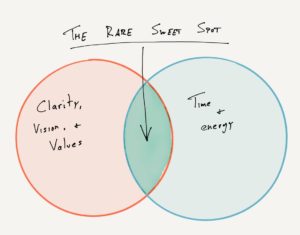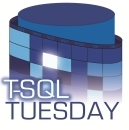One of my goals this year is to stay more focused on my active projects without losing focus of my yearly goals. During 2017, I found myself getting caught up in the day to day requirements of being a Database Administrator rather than planning my day/week/month around my goals. Come review time for 2017, I realized I had not paid enough attention to my goals throughout the year, just the daily operational tasks. This was the catalyst for purchasing Shawn Blanc’s (t|b) Focus Course. I heard about Shawn’s work through a few different podcasts and decided to give it a try.
The course was laid out in 8 easy sessions. Each session was a single page to read through or you could use the accompanying video if you wanted to sit back and listen to Shawn talk through the topics. Each video average around 6 minutes, so it didn’t take long to get through the course. Here are sections of the course and the key points that stood out to me:
 Why We Need a Focused Life
Why We Need a Focused Life
Change your mind about life vision. A focused life is a vision for your life (your “why”), life goals (your “what”), action plan (your “how”), daily schedule (your “when”), lifestyle practices (your safety net).
Meaningful Productivity
Consistently giving our time and attention to the things that are most important
Personal Integrity
Are there little things you can do today to improve your day tomorrow?
The Note
Leave a note out for yourself that is the first thing you’re going to do tomorrow when you begin your workday. Let your mind think about it overnight.
Schedule Your Most Important Tasks
Budgeting time is similar to budgeting money, big rocks first.
The Echo Chamber
Turn off notifications. Use downtime to be creative: take a walk or listen to a podcast.
Understanding Overwhelm
Recharge your brain by reading (30 minutes) and get enough rest.
The Jolt
What event in your life caused you to reflect on things?
I really enjoyed the course and am still using some of the topics in my daily and weekly routines. The first thing I did was turn off notifications for all my social media accounts. I still look through them, but during a time I choose, not the notifications dictating it to me. During my weekly review, I review a list of keys areas of my life and decided “Are there little things you can do today to improve your day tomorrow?”. This helps set the stage for a focused week. Trying to schedule the “big rocks” during the first part of my day helps me schedule time for those projects that I don’t have time to solve in one day, but rather pick away at the project, week over week, til the solution is in sight.
If you are having problems staying focused, give Shawn’s course a try, it helped me.
Doug Purnell
@SQLNikon
sqlnikon@gmail.com
https://sqlnikon.com
